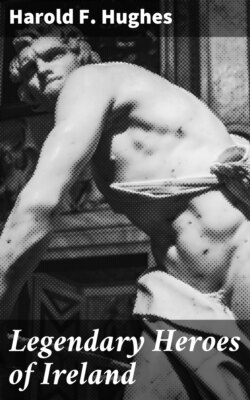Читать книгу Legendary Heroes of Ireland - Harold F. Hughes - Страница 4
На сайте Литреса книга снята с продажи.
THE FENIANS
ОглавлениеTable of Contents
The stories of the great heroes of Ireland, or Erin as it used to be called, are gathered in groups around certain men. The Fenians whom Finn MacCool commanded from the age of ten until his death, was a body of military men about whom the best known stories are told.
These Fenians might be said to correspond to our standing army. There were three groups of a thousand men each in peace times. In time of war the number could be expanded enough to take in all who wished to fight. Some people claim that Finn and his Fenians never existed. Others say that this body of men did exist from 400 years before the birth of Christ until they were destroyed in a great battle in the year 284 A. D. Whether they formed a real army or not does not spoil our enjoyment of their deeds of bravery.
In reading the exploits of the Fenians it is necessary to remember that to the Irish mind these men were either gods or giants, many times the size of people of the present day. If you forget this you will not be able to understand how one hero can hold back a whole army of ordinary soldiers, and how strokes of their swords cut off whole hilltops and formed new valleys.
To become a Fenian was a great honor. It was only open to men of the best families and of the highest character, and many of these were not able to pass the tests required.
In the first place a Fenian must be well educated in poetry and must be able to write it himself. In other words, he must have all the education which those days gave. Again, he must pledge himself to be kind and gentle to the weak and oppressed, to be willing to fight when challenged and to keep up the battle until he won or was killed. He must promise never to injure the common people, not to allow gold to make him false to his friends, not to accept a dowry with a wife. He must agree not to run away from nine or less champions, and his parents must pledge themselves not to seek revenge if he was killed in battle.
The physical tests were even harder to pass. The candidate must have his hair braided, take his spear in his hand and through the forest. After he was given sufficient start he was pursued by other Fenians. If he was overtaken, he was wounded and rejected. If his spear trembled, or if he broke a dry branch in his flight, that also barred him out. Then, when the trial was over, his braids were examined. If he had shaken them out of position, proving that he had had to work hard to get away, he had to give up all hopes of joining.
Another test consisted of placing him in a hole up to his waist and giving him a shield in one hand and a hazelwood stick in the other. Nine warriors with nine spears formed in a circle and threw at him. If he was wounded he was not accepted. No wonder that a man who passed such tests was ready to face great numbers of ordinary soldiers.
A Fenian had also to be very nimble and supple. One of the tests was to put up a lath on the level of his eyebrows and another farther on, just the height of his knees. The man had to go at full speed, leaping over the first one and going under the second without slackening his pace. The boys who read this have only to try this test to realize that a Fenian would be a winner on a track team of today.
It was men who could pass such tests who made up the kind of heroes commanded by Cool, Gaul of Morna and Finn. These are the three great leaders mentioned in the stories. Cool made them a mighty band; Gaul held them together after the death of Cool; Finn was the last and greatest leader.
